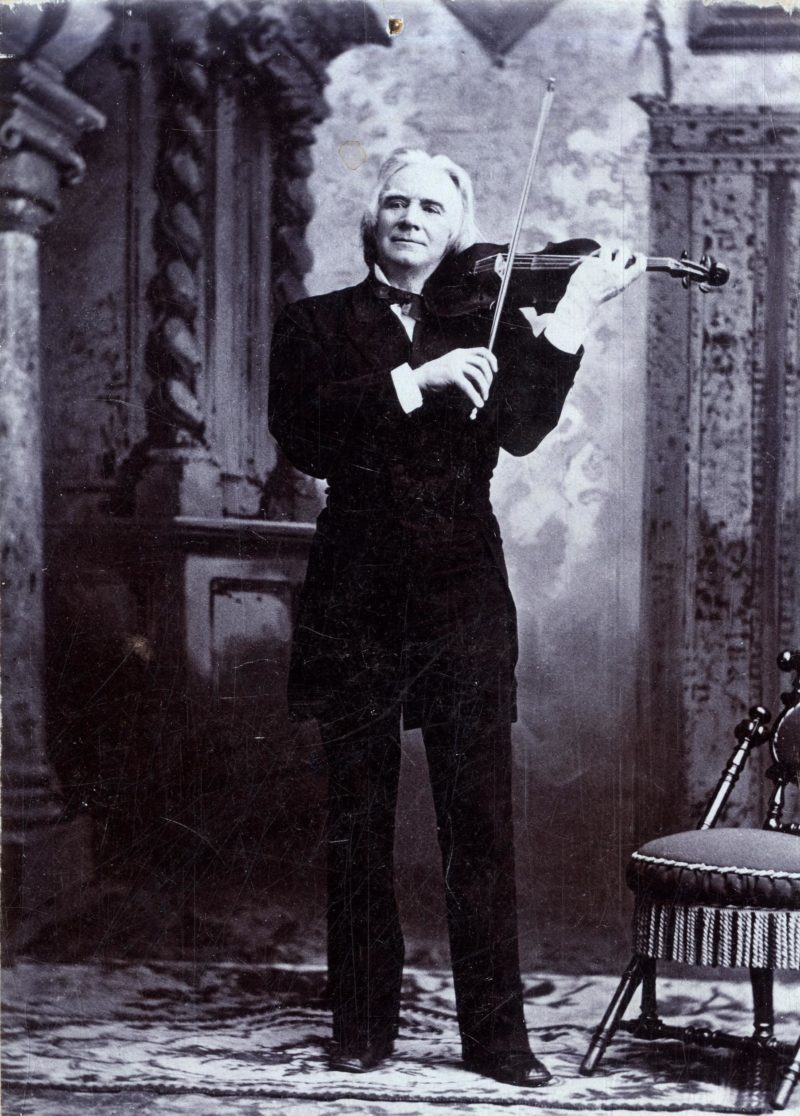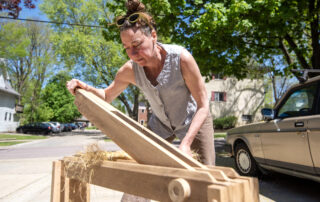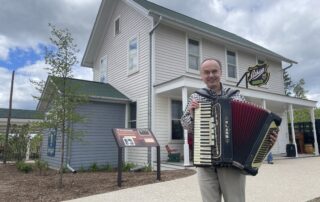When internationally-acclaimed Norwegian violinist Ole Bull came to Madison in January 1868, a hundred torch-bearing countrymen escorted him up West Washington Avenue to his hotel. Tickets for his Madison concert were going for ten dollars apiece, five times what most men could hope to earn in a day. Bull was used to that kind of hoopla. What he wasn’t used to was a woman like Mrs. Amelia Chapman Thorp.
Mrs. Thorp was a virtuoso of gilded age living She was the wife of a wealthy lumberman from Eau Claire and had persuaded her husband to buy a palatial house at 138 East Gilman Street in Madison after he was elected to a two-year term in the state senate.. She traveled around town in a glittering carriage drawn by white horses driven by a coachman.
Her plans for her daughter Sara were equally grand, and when opportunity knocked, she was quick to respond.
At a reception attended by the cream of Madison society, UW-Madison professor Rasmus Anderson introduced Bull to the eighteen-year-old Sara. Like most women, Sara was drawn to the charming and handsome fifty-eight-year-old widower. She was a capable pianist and an engaging conversationalist, and the attraction was mutual.
Despite her husband’s heated objections, Mrs. Thorp encouraged the relationship between Bull and Sara, and, in March 1870, when Bull returned to Madison, she arranged for him to stay with the family and saw to it that he and Sara spent time alone while she monitored their progress from a discreet distance.
When Bull invited mother and daughter to accompany him on a trip to Norway that summer, Mrs. Thorp dismissed her husband’s objections and accepted.
In the weeks leading up to the departure, Bull wrote flowery love letters to Sara, sending them via Mrs. Thorp lest they fall into the hands of the unsympathetic Mr. Thorp, and when summer came, mother and daughter set out for New York, where they rendezvoused with Bull for the voyage to his 640-acre island estate near Bergen. After two idyllic weeks of sailing and horseback-riding and playing duets, Bull popped the question, and in June, he and Sara were married in secret.
Before long, Sara’s father must have realized that resistance was futile because in September, when the couple returned to Madison to tie the knot in public, a thousand wedding announcements went out to prominent people all over the United States and Europe, and again Mrs. Thorp spared no expense. For the wedding at the Gilman Street house, she hired a Chicago orchestra and a caterer who served delicacies on a $30,000 set of silver dishes.
After the dazzling success of part one of her plan, Mrs. Thorp moved on to part two, which didn’t work out quite as well. Eager to show off her new son-in-law, she arranged extravagant dinner parties at which he was to be the center of attention, but he was equally determined to avoid the attention and slipped away to Professor Anderson’s house on State Street to feast on anchovies and talk Norse mythology, waiting till after midnight to return, by which time the last of the guests had departed.
He developed a strong and enduring dislike for his meddling mother-in-law.
But the marriage held for ten years. Sara accompanied Bull on his extensive tours and performed often with him, and in 1880, when the famous violinist died at his estate in Norway, Sara was at his side.
She settled in Cambridge, Massachusetts, with her mother and devoted the rest of her life to philanthropy and the study of Hindu philosophy.








